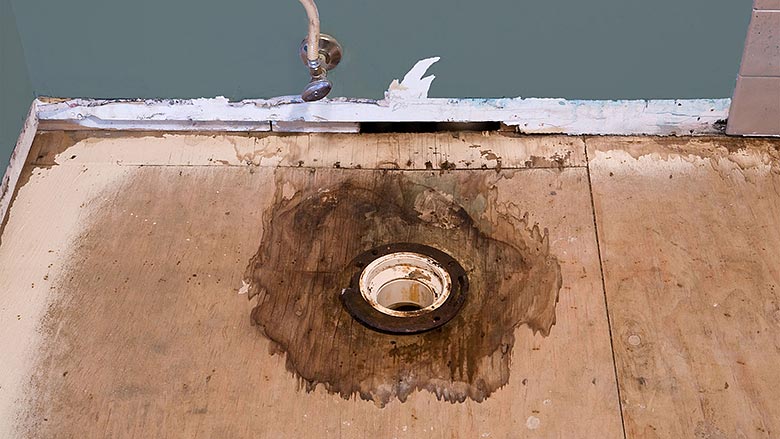Stopping Water Damage in the Bathroom
Stopping Water Damage in the Bathroom
Blog Article
Are you currently trying to find advise on How to Prevent Bathroom Water Damage?

The shower room is very susceptible for moist buildup as well as prospective water damage due to the constant use water in it. This short article provides easy inspection strategies to aid detecting water damages threats.
The constant use water in the shower room makes it very prone for damp build-up and potential water damage. By evaluating it consistently, you can lower water relevant problems.
The complying with set of inspections is easy to execute as well as ought to be done as soon as in every three months in order to keep your bathroom healthy as well as to stop possible water problems triggered by the bathtub, the shower, pipeline joints and also plumbing, sinks, cupboards, as well as the toilet
Do not neglect doing these evaluations and also be complete while performing them. Keep in mind that these straightforward evaluations can save you a great deal of money by supplying very early indications for water damage
Bathtub and also Shower
The shower as well as bathtub call for special attention and also maintenance. Check the ceramic tiles and change if split. Make sure that there is no missing out on grout between the floor tiles. Examine and also replace cracked caulking at joints where the wall surfaces meet the flooring or the tub. Obstructed drains pipes and pipelines problems will protect against the bathtub from drying out as well as may show major problems under the tub. Consult with a specialist promptly to prevent architectural damage. Take notice of stainings or soft areas around the bath tub walls as they might suggest an inner leakage.
Plumbing
Signs for water damage are difficult to spot given that many pipelines are set up inside the wall surfaces.
Pay special focus to flooring and also wall surfaces moisture and discolorations as they may show an unnoticeable plumbing trouble. Check wetness degrees in adjoining spaces too.
Sinks and Cabinets
Sinks as well as closets are exposed to wetness as well as moisture daily as well as are typically ignored. Evaluate frequently under the sink and also on the countertop above it. Repair any kind of drip in the catch as it might recommend drain problems. Browse the sink, sluggish draining pipelines may indicate an obstructed drainpipe. Change sink seals if they are cracked or loose.
The Bathroom
The commode is an at risk water junction. Check the water lines as well as look for leakages around the commode seat, in the hose, and under the water storage tank. If you find any kind of signs of moisture on the floor around the toilet, check for leakages in the toilet rim and tank seals.
Be aware that hanging toilet bowl deodorants increases the opportunities for obstructions.
Water Damage Signs In The Bathroom To Avoid Cleanup
Musty smell
This is one of the easiest signs to catch because musty smells are so odorous. The damp, earthy, moldy smell should be a big red flag. The smell will develop when moisture gets trapped in surfaces, and begins to facilitate mold growth. Leaking pipes under cabinets, inside walls, and behind shower fixtures will cause moisture to stay trapped and not dry, which will lead to mold growth and spread. As soon as you notice any musty smells in your bathroom, have it checked for hidden water damage and cleanup signs.
Visible mold
If the smell isn’t there to give it away, sometimes you will actually see mold growth. Finding mold in your bathroom is a serious problem, because mold is very harmful to your health. By the time mold growth is visible, it also means that water damage has already occurred and been present for some time. The only way the mold problem can be resolved is to find the source of the moisture and get it stopped. To safely and adequately remove mold, you need to have professionals handle the remediation. Do not waste any time in getting mold problems addressed, fixed, and sanitized so that you can protect you and your family from the many respiratory symptoms caused by mold exposure.
Damaged floors
Bathroom floors should be able to withstand some exposure to water while still remaining in good condition. However, when excess exposure or water leaks occur, they will begin to damage even the most water-resistant flooring. If you notice any cracking, bubbling, staining, or warping on your bathroom floors, there is probably a water leak somewhere causing the distortion. If you notice areas of the floor have become softer, or even have a spongy feeling, there is probably damage to the subfloor. Subflooring is typically made up of plywood. When plywood is exposed to water or moisture, it will absorb it. Once it has become saturated, the weight of the excess water will cause the wood to swell and soften. Check the floors in your bathroom frequently to catch any of these sings before they lead to damaged subflooring.
Changes on walls
When water leaks behind walls, it will cause changes in the drywall. Peeling plaster, blistering paint, and soggy wallpaper are all good indicators that excess water is building up behind the wall. Water leaking behind drywall will cause it to swell and be soft to the tough. If you start to notice gaps along the trim of your walls, or where tile meets the wall, it could also be a strong indicator that there is a leak behind the wall. Any changes, distortion, or damage on the walls should be evaluated as soon as you notice it to prevent further water damage and cleanup.

I came across that blog entry about Looking for Signs of Water Damage in the Bathroom when scouting around the internet. Enjoyed reading our entry? Please share it. Help somebody else locate it. Thank you for your time. Come back soon.
Contact Report this page